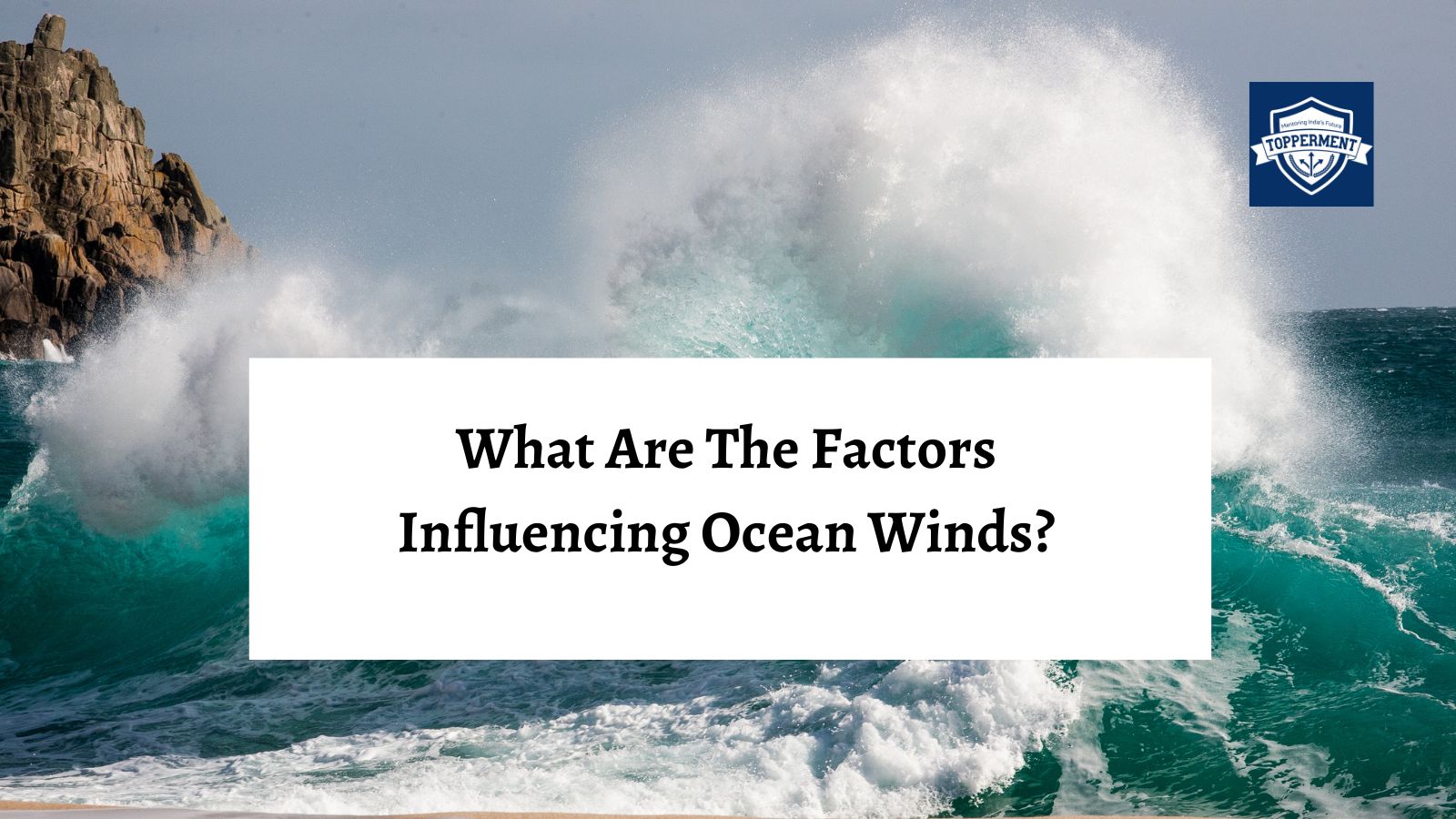
What Are The Factors Influencing Ocean Winds? | UPSC Geography
Ocean winds are an essential component of the Earth’s climate system and play a crucial role in various atmospheric and oceanic processes. Understanding the factors that influence ocean winds is important for predicting weather patterns, ocean currents, and climate change
Global Pressure Systems:
The distribution of pressure systems across the globe is a major factor influencing ocean winds. Regions with high atmospheric pressure tend to experience air moving towards lower pressure areas, resulting in the formation of winds. The movement of air creates a global atmospheric circulation pattern consisting of high-pressure belts, such as the subtropical highs and polar highs, and low-pressure belts, like the equatorial low and subpolar lows.
Coriolis Effect:
The Coriolis effect, caused by the Earth’s rotation, also influences ocean winds. As air moves from high-pressure to low-pressure areas, the Coriolis effect causes the air to deflect to the right in the Northern Hemisphere and to the left in the Southern Hemisphere.
Ocean Currents:
Ocean currents play a significant role in shaping wind patterns over the oceans. Warm ocean currents, like the Gulf Stream, can enhance evaporation, leading to the formation of moisture-rich air masses. These air masses, when they come into contact with cooler air, can produce strong winds and contribute to the development of storms and cyclones
Land-Sea Interaction:
The interaction between land and sea also affects ocean winds. During the day, land surfaces heat up more quickly than water surfaces, creating a pressure difference. This causes air to flow from the cooler ocean to the warmer land, resulting in sea breezes
Topography:
The topography of coastal regions and nearby landmasses can alter wind patterns. Mountains, valleys, and other landforms can cause the air to flow in specific directions and intensify or weaken winds. For example, when wind encounters a mountain range, it is forced to rise, creating upslope winds on one side and downslope winds on the other
Several factors influence ocean winds, including global pressure systems, the Coriolis effect, ocean currents, land-sea interaction, and topography. By understanding these factors, scientists and meteorologists can better predict and comprehend wind patterns, which are crucial for various applications like weather forecasting, navigation, and studying climate change
Also Read
- Effects of Ocean Currents: Understanding the Power of the Seas | UPSC Geography
- The Environmental Impacts of Mining: What You Need to Know | UPSC Environment
Follow Us For More Content On:
https://www.instagram.com/topperment/
Tag:Geography, IAS, IFS, India, IPS, IRS, Land, Ocean, Ocean Currents, Ocean Winds, Oceanography, Topography, UPSC



